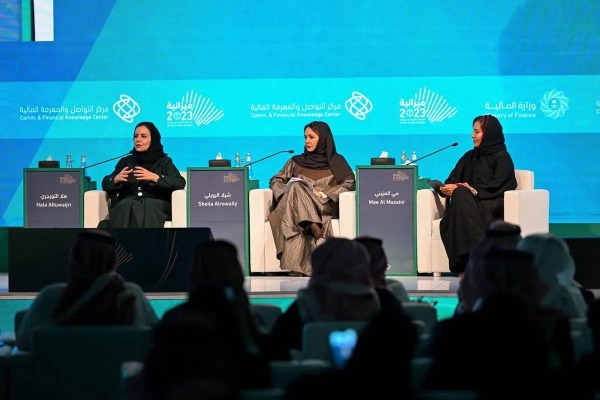Saudi Arabia’s Vision 2030 initiative, a comprehensive plan to diversify the nation’s economy and promote social development, is experiencing a significant boost from the increasing number of working women.
A recent report by S&P Global reveals the promising economic impact of this initiative, particularly as it pertains to enhancing female employment prospects within the Kingdom.

The study indicates remarkable progress in expanding the female workforce in Saudi Arabia, with women now constituting 36 percent of the total human capital in 2022. This substantial increase is a notable jump from the 19 percent recorded in 2016, surpassing Vision 2030’s target of achieving a 30 percent female workforce by the end of the decade. The growth in women’s participation in the labor market can be attributed to several key factors, including improved access to education, declining fertility rates, and a more inclusive cultural environment.
Educational attainment among women of Saudi Arab has notably improved, with nearly 32 percent of women aged 25 and above holding at least a bachelor’s degree in 2020, compared to 26 percent in 2017. This educational empowerment has played a pivotal role in driving female workforce participation.
The increase in the female workforce has also contributed to raising the overall employment participation rate in Saudi Arabia to a record high of 61.7 percent in March 2022, a significant increase from the 54.2 percent recorded in June 2017. This surge in workforce participation is not only a testament to the success of Vision 2030 but also an indicator of the changing dynamics within Saudi Arabia’s labor market.
Perhaps most strikingly, if the current pace of labor force participation growth among women continues over the next decade, S&P Global Ratings Economics estimates that the Saudi economy could potentially expand by an additional $39 billion, representing a growth of 3.5 percent. To provide context, this estimation is derived by comparing the current scenario with historical labor force participation rate growth observed from 2000 to 2022.
The S&P Global highlights the significance of this growth, stating that “increases in the overall participation rate of just 1 percentage point per year over the next 10 years would boost the country’s annual real GDP growth by an average of 0.3 ppt, to 2.4 percent per annum, assuming that labor force productivity growth for the next 10 years will look the same as the last 20 years.”
The economic empowerment of women in Saudi Arabia is not only reshaping the nation’s economy but also transforming the broader Middle East and North Africa (MENA) region. A recent study conducted by the First Abu Dhabi Bank and WealthBriefing reveals that the increasing wealth of women is significantly impacting regional economies.
This report, titled “Winning Women in MENA: How Wealth Managers Can Help Further Female Empowerment,” attributes the rise in women’s economic influence in the region to technological advancements and the flourishing startup culture. Notably, the Middle East, particularly Saudi Arabia, has witnessed a surge in women entrepreneurs, with one out of every three new businesses in the region now founded by women.
The report underscores the effectiveness of women in managing family businesses, emphasizing their tendency to make more diversified and less emotionally driven investment decisions. Samira Zakour, managing director at FAB, notes that “women listen to a variety of opinions before deploying capital, and that often leads to less emotional investing and, potentially, to better returns.”
Moreover, women’s unique perspective and “soft” skills play a pivotal role in negotiating complex relationships within family businesses. They bring a fresh viewpoint to wealth management, enabling them to identify new opportunities and navigate intricate family dynamics.
The study also highlights the impressive progress of women’s education in the MENA region, with tertiary education attainment among women reaching 43 percent in 2019, surpassing the global average of 36 percent and outperforming the male average of 40 percent worldwide.
In conclusion, Saudi Arabia’s Vision 2030 initiative has not only led to a remarkable increase in female workforce participation but is also poised to fuel substantial economic growth in the coming years.
The empowerment of women is not limited to Saudi Arabia alone; it is a transformative force reshaping the economies of the entire MENA region. As women continue to rise in prominence, their contributions to business, investment, and wealth management are demonstrating significant potential for economic prosperity across the region.











 United Arab Emirates Dirham Exchange Rate
United Arab Emirates Dirham Exchange Rate